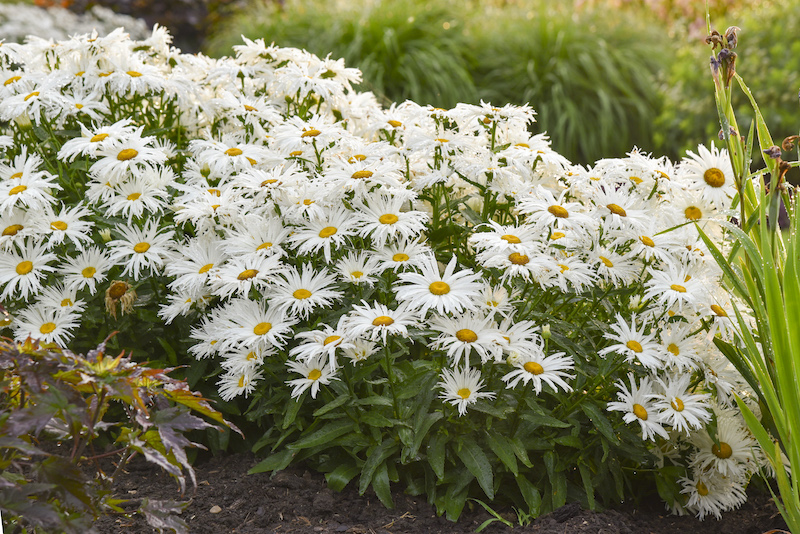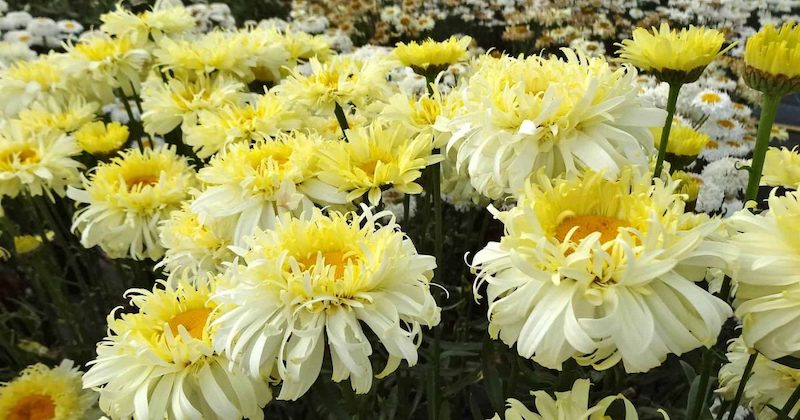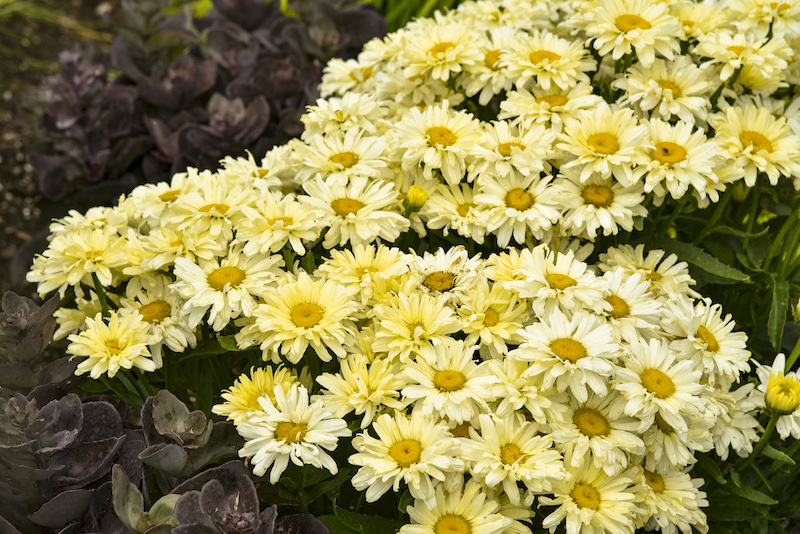Fertilizing Shasta Daisies can help ensure they receive the nutrients they need to remain healthy and grow vigorously. Shasta Daisies prefer growing in soil rich in organic matter. To boost the organic content, you can apply a few inches of compost or well-rotted manure to the base of the plant each spring. If the growing site has poor soil, try using a granular feed in spring to boost growth. Fertilizing your Shasta Daisies can help keep them looking their best and ensure that they continue to provide beauty in your garden for seasons to come.

How to Fertilize Shasta Daisy
Shasta Daisies will not need heavy amounts of fertilizer, but do respond well to an annual feed of slow-release fertilizer in the spring. Apply the fertilizer to the plant's root zone, scratching the granules into the soil. You can also apply a diluted liquid feed high in phosphorus in early summer to support blooming. However, be careful not to over-fertilize, as this can lead to fertilizer burn and damage to the plants. Water the plant before and after fertilizing to aid in absorption of the nutrients.

Best Time To Fertilize Shasta Daisy
For newly planted or young Shasta Daisies, hold off on fertilizing while their root systems are still forming and sensitive to chemicals. For mature, established Shasta Daisies, it may be sufficient to fertilize once or twice per year, depending on the fertility of your soil. It is generally best to fertilize Shasta Daisies in the spring and early summer, as this will help to support strong growth and flowering. Follow the instructions on the fertilizer packaging, as different fertilizers may have different application rates and frequencies.

Best Fertilizer For Shasta Daisy
Many fertilizers can nourish Shasta Daisies and support strong growth. If you prefer organic fertilizers, consider a granulated organic fertilizer to support blooming, such as Espoma Organic Flower Tone. This fertilizer is formulated with natural ingredients, such as bone meal, feather meal, and blood meal, to provide a balance of the three primary plant nutrients: nitrogen, phosphorus, and potassium. The fertilizer also contains micronutrients to support overall plant health.
Another option is a slow-release organic fertilizer, such as Osmocote Smart-Release Plant Food Plus Outdoor & Indoor. This fertilizer is formulated with a blend of natural ingredients, including bone meal, soybean meal, and feather meal, to provide a balanced mix of nutrients. The slow-release formula helps provide a steady supply of nutrients to the plants over the growing season, reducing the need for further applications.
In terms of the best fertilizer mix, a balanced fertilizer with a ratio of approximately 3-4-5 (such as 3% nitrogen, 4% phosphorus, and 5% potassium) can be a good choice for Shasta Daisies. This fertilizer will give the plants the nutrients they need for strong growth and flowering without promoting too much foliage growth.
Miracle-Gro is generally considered to be a good fertilizer for a wide range of plants, including Shasta daisies. However, it is important to keep in mind that Miracle-Gro is a synthetic fertilizer, rather than an organic one. Therefore, if you prefer organic fertilizers, consider one of the options mentioned above.
Shasta Daisy Fertilizing Tips
- When selecting a fertilizer for your Shasta Daisies, look for a product formulated for flowering plants that contains a higher phosphorus content. In addition, consider using a slow-release fertilizer to provide a steady supply of nutrients to the plants over time.
- To help the plants absorb the nutrients more effectively, apply the fertilizer to the root zone of the plants rather than the foliage.
- Different fertilizers may have different application rates and frequencies, so follow the instructions on the fertilizer packaging to avoid over-fertilizing.
- Water the plant well before and after applying a liquid feed to minimize fertilizer burn.
Warnings
-Always wear protective gloves and a face mask when handling chemical fertilizers.
-Closely follow all directions and storage guidelines that are on the fertilizer label.
 |
Author Chris Link - Published 2-3-2023 |
